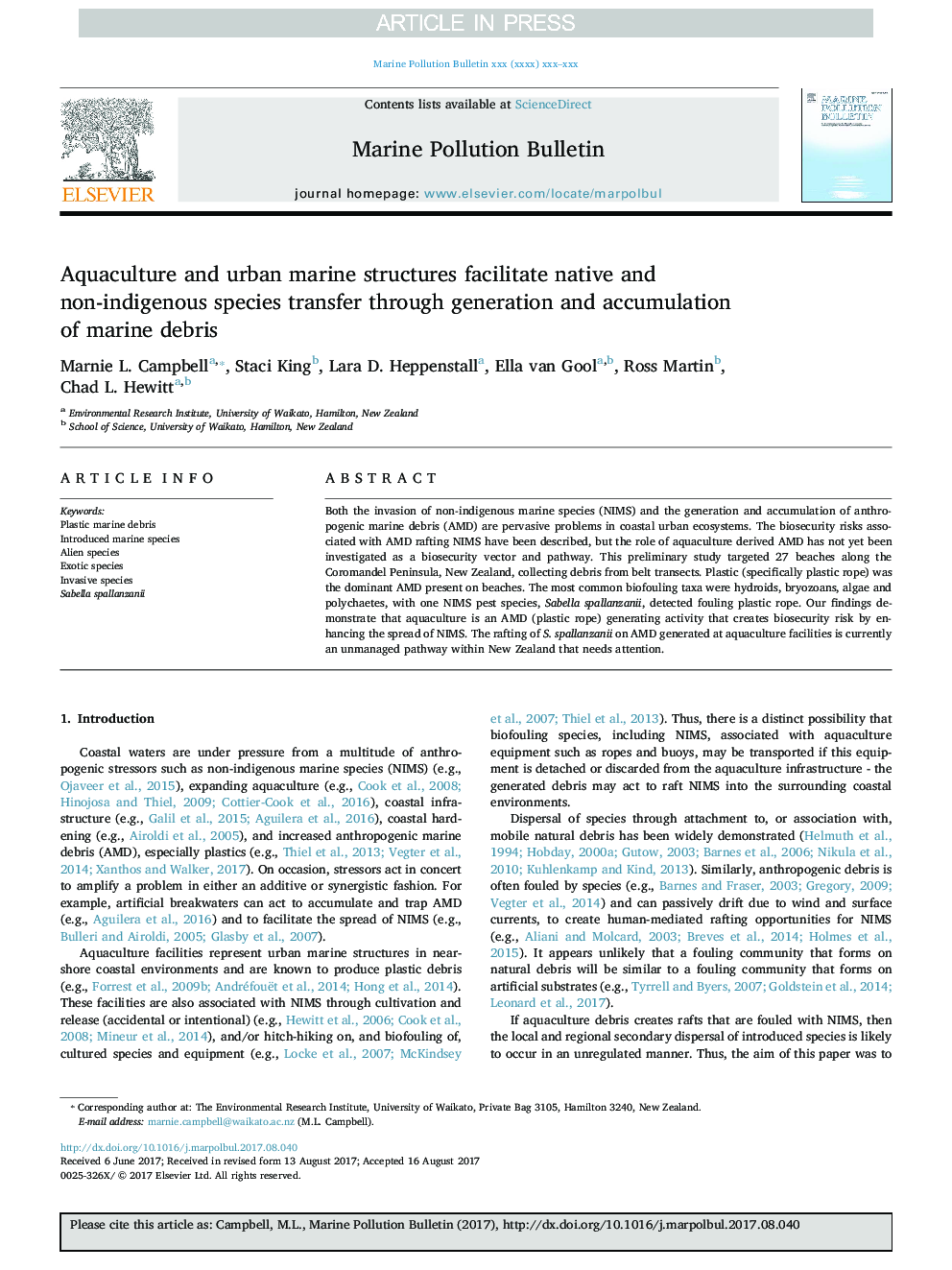| Article ID | Journal | Published Year | Pages | File Type |
|---|---|---|---|---|
| 8872359 | Marine Pollution Bulletin | 2017 | 9 Pages |
Abstract
Both the invasion of non-indigenous marine species (NIMS) and the generation and accumulation of anthropogenic marine debris (AMD) are pervasive problems in coastal urban ecosystems. The biosecurity risks associated with AMD rafting NIMS have been described, but the role of aquaculture derived AMD has not yet been investigated as a biosecurity vector and pathway. This preliminary study targeted 27 beaches along the Coromandel Peninsula, New Zealand, collecting debris from belt transects. Plastic (specifically plastic rope) was the dominant AMD present on beaches. The most common biofouling taxa were hydroids, bryozoans, algae and polychaetes, with one NIMS pest species, Sabella spallanzanii, detected fouling plastic rope. Our findings demonstrate that aquaculture is an AMD (plastic rope) generating activity that creates biosecurity risk by enhancing the spread of NIMS. The rafting of S. spallanzanii on AMD generated at aquaculture facilities is currently an unmanaged pathway within New Zealand that needs attention.
Related Topics
Physical Sciences and Engineering
Earth and Planetary Sciences
Oceanography
Authors
Marnie L. Campbell, Staci King, Lara D. Heppenstall, Ella van Gool, Ross Martin, Chad L. Hewitt,
